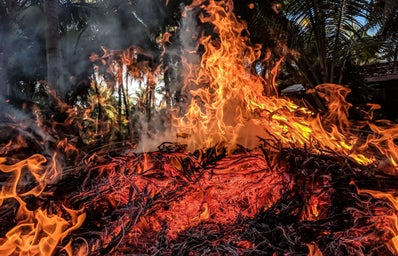Our planet has been showing the repercussions of mankind’s actions for quite some time now. According to NASA researchers, 19 of the warmest years in history have occurred since 2001. The cause for this increase in temperature? You guessed it, an increased amount of greenhouse gasses and other emissions that continue to be released into the atmosphere. Greenhouse gasses are classified as carbon dioxide, water vapor, nitrous oxide, and other fluorinated gasses. These emissions can be natural (like when we exhale oxygen) or they can be unnatural (like burning fossil fuels). One is far worse for the environment than the other, and it’s urgent that everyone try to monitor their personal footprint as best as possible. As scientists can tell, the effects of climate change are overwhelming as the global temperature rises, the oceans get warmer, ice sheets continue to shrink and sea levels rise.
So many of these processes are already being displayed throughout the world at alarming rates, and people are responding to them with a number of climate strikes. The Global Peace Index reported that countries with the highest risk of climate hazards in 2018 were in the Asian-Pacific regions. The most at-risk country was the Philippines followed by Japan, Bangladesh, Myanmar, China, Indonesia, India, Vietnam, and Pakistan. The tenth most at-risk country was tied between the United States and several other countries. Here are four countries that have been affected by climate change recently.
- Australia
-
Australia earned heavy media attention after rapid bushfires blazed out of control, destroying 27.2 million acres of land and killing an estimated 1 billion animals. There are more than 50 fires that still aren’t contained in Victoria and New South Wales. According to BBC, more than 1,600 firefighters are currently working to “slow the spread of fires.”
Australia has also been struggling with ocean acidification and coral bleaching within the last decade, that has impacted the famous Great Barrier Reef. Australia’s Department of the Environment and Energy expressed concern about carbon emissions, saying, “Ocean research has shown that about half of all the carbon dioxide (CO2) released by human activities is now found in the world’s oceans and that the Southern Ocean absorbs about 40% of this.” Ocean acidification is a significant problem because it prevents calcium carbonate from forming the necessary skeletons that reefs need. Without it, the entire ecosystem’s food chain becomes damaged. If ocean acidification isn’t stopped, the ocean’s acidity is expected to increase by 320% by 2100.
- Kenya
-
Kenya is currently experiencing one of the worst locust infestations in 70 years. The desert locusts now pose a threat to food security as they continue to swarm, eating their way through farmer’s crops. Fox News reported that these insects can eat enough food for 35,000 people in a single day. Global warming can be attributed as one of the reasons why this problem is resurfacing again. Africa experienced a very “wet” year in 2019 and when coupled with the warm conditions, the locusts began to invade several countries including Ethiopia and Somalia as well. Unfortunately, this isn’t a problem that can just be solved easily, however, Kenya plans to allocate five million dollars to aide the elimination of these locust hoards.
- Italy
-
Venice, Italy has been experiencing major flooding, resulting in the destruction of numerous homes and shops throughout the city. In 2018, 11 people were killed when more than 70% of the city was overwhelmed as water levels rose. The New York Times reported that Venice hadn’t experienced a flood that severe since 1966. It was concluded that both rising tides and winds at more than 75mph caused the phenomenon.
- Pakistan
-
According to USA Today, “Pakistan contributes less than one percent of the world’s greenhouse gases blamed for causing global warming, yet its 200 million people are among the world’s most vulnerable victims of the growing consequences of climate change.” Pakistan is facing a multitude of climate change related problems like unbearable temperatures, droughts, and flooding that is being traced to health related issues, poor agriculture, and demands for water supply in the country. In April 2018 one of Pakistan’s southern cities, Nawabshah, the temperature was 122.4 degrees Fahrenheit – the hottest day ever recorded in April. It was even hotter the following month in the city of Turbat, with an uminaginable128.3 degrees Fahrenheit. These temperatures are dangerous for a country that only received 10 inches of rain per year.
While I only highlighted four instances of climate change in action, the reality is clear: every single place has already been, or is about to be, impacted by climate change. This idea can be daunting, especially as an individual who might want to make a difference. But one person can’t save the world. If you’re looking to become more eco-conscious to help the planet, consider finding ways to reduce your individual carbon footprint. Some easy ways are by taking public transportation, using reusable bags for all shopping trips, reducing your use of single-use plastics, adding more plant-based foods to your diet, and being diligent about your laundry cycles.
If you’re more concerned on a macro-scale, start writing to your elected officials at the local, state, and national level to create legislation that will help reduce the effects of climate change. Donating to specific causes like hurricane and earthquake relief in Puerto Rico or the bushfires in Australia are other great ways to help where you can. Last, but certainly not least, silence does not remedy a problem like this. Register to vote if you haven’t already and find out where local climate strikes are taking place in your town or city and let your voice be heard.


